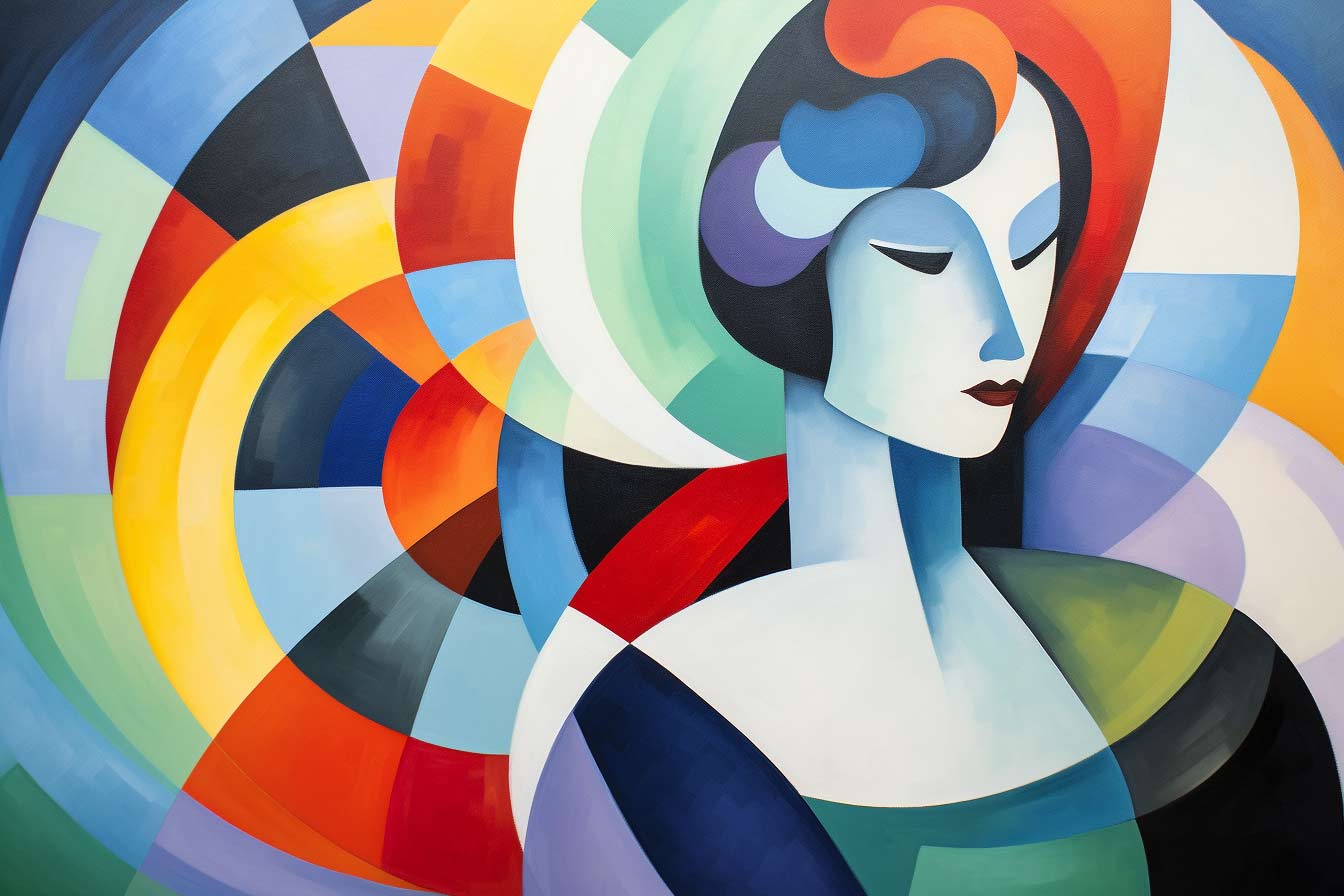Robert Delaunay: A Dance of Colour & Cubism
In the sprawling city of Paris, in the warm embrace of 1885, Robert Delaunay came into the world, drawing his first breath amidst an epoch of grand revolutions in art and philosophy. This child, destined to become a beacon in the art world, was birthed in a milieu where creative fervour was not just a passion but the very air one breathed.
Delaunay’s early initiation into art was like the first strokes on a canvas – tentative yet promising. His initial dabble in theatre set design was but a fleeting waltz. However, soon the allure of painting captivated him. The Parisian art scene of the early 20th century, burgeoning with new ideas and movements, seduced young Delaunay into its fold, where Cubism was emerging as the new vanguard.
Yet, Delaunay’s tryst with Cubism was not a mere mimicry of its pioneers. Rather, it was a dance of colour and form. He found in Cubism not just shapes, but a riot of colours that played upon the canvas, evoking a symphony of emotions. This birthed ‘Orphism’, a term inspired by the musician Orpheus, which saw Delaunay and his contemporaries embrace the musicality and rhythm of colours. Herein, Robert and his equally talented wife, Sonia, painted canvases that resonated with harmonious chromatic tunes.
In these rhythms, ten masterpieces of Delaunay’s Cubism stand out as luminous testimonies of his genius:
- “The Sun, Simultaneous” (1912-13) – A radiant burst of concentric circles, a vision of the sun’s energy translated to canvas.
- “Simultaneous Windows” (1912) – An array of fragmented forms, bathed in a symphony of colours, showcasing the cityscape.
- “Champs de Mars: The Red Tower” (1911-23) – An homage to the Eiffel Tower, cast in robust reds and fragmented geometries.
- “The Cardiff Team” (1913) – A jubilant celebration of rugby players, where motion and colour conflate in harmonious chaos.
- “Circular Forms” (1930) – A return to his love for concentric shapes, this piece resonates with a meditative quality.
- “Homage to Bleriot” (1914) – A tribute to the aviator, Delaunay’s canvas captures the dynamism and fervour of flight.
- “Eiffel Tower with Trees” (1910) – A juxtaposition of nature and the monument, painted with a playful palette.
- “The Poet Philippe Soupault” (1922) – A vibrant portrait, where fragmented forms and bold colours celebrate the spirit of the poet.
- “The Three Windows, the Tower and the Wheel” (1912) – An encapsulation of Delaunay’s Paris, resplendent in its multifaceted geometries.
- “The First Disk” (1912-13) – A precursor to his many concentric masterpieces, this work thrums with energy and rhythm.
As time waltzed on, Delaunay, ever the restless spirit, ventured into other artistic endeavours. His forays into public murals and aero sculptures were testimony to an artist who saw no boundaries, only horizons to conquer.
Yet, like every masterpiece that finds its completion, Delaunay’s journey culminated in 1941. The world mourned the passing of an artist who had taught it to see not just forms, but the very soul of colours. His legacy, much like his vibrant canvases, remains undiminished, echoing in the annals of art, as a harmonious tune that celebrates the dance of life.

